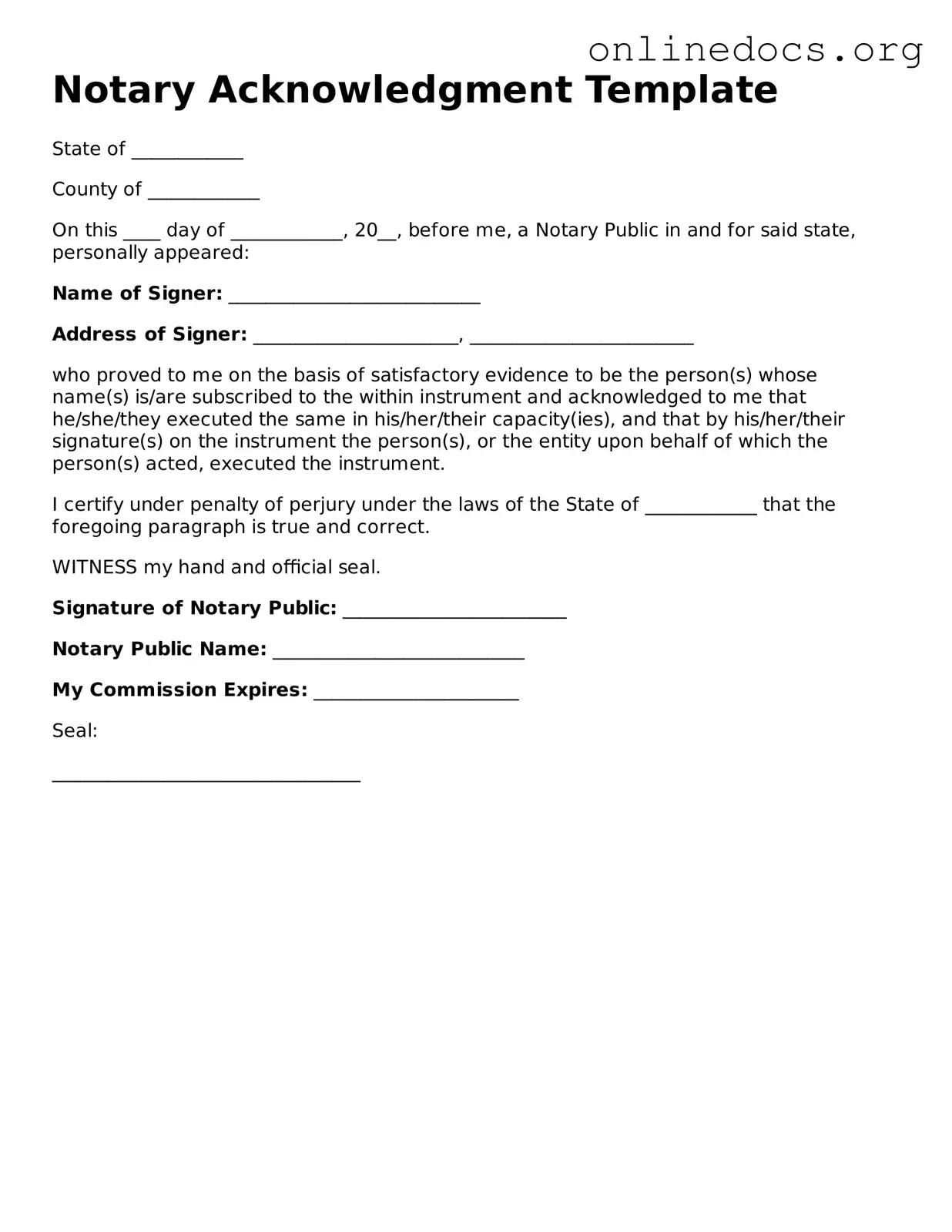Filling out a Notary Acknowledgment form can seem straightforward, but many people make common mistakes that can lead to delays or issues with their documents. One frequent error is failing to include the date of the acknowledgment. This date is crucial as it indicates when the notary verified the identity of the signer. Without it, the acknowledgment may be considered incomplete.
Another mistake is neglecting to sign the form in front of the notary. Some individuals may think that they can sign the document beforehand. However, the notary must witness the signature to validate the acknowledgment. If the notary did not observe the signing, the acknowledgment loses its legal weight.
Inaccurate information about the signer can also cause problems. It's essential that the name on the acknowledgment matches the name on the identification provided. If there are discrepancies, the notary may refuse to complete the acknowledgment, leading to further complications.
People often overlook the requirement for identification. Notaries need to verify the identity of the signer using a government-issued ID. Failing to present proper identification can result in the notary being unable to perform their duty, thus invalidating the acknowledgment.
Another common error is leaving out the notary’s signature or seal. Both are necessary to authenticate the acknowledgment. Without these, the document may be rejected by institutions that require notarization.
Some individuals forget to specify the capacity in which they are signing. If someone is signing on behalf of an organization, it's important to indicate their title or role. This detail helps clarify the authority of the signer and can prevent misunderstandings.
Inconsistent formatting can also be a problem. For example, if the signer’s name is printed differently in various sections of the form, it may raise questions about the validity of the document. Consistency is key to ensuring the acknowledgment is accepted.
Finally, not reviewing the form before submission can lead to overlooked mistakes. Taking a moment to double-check all entries can save time and prevent potential issues down the line. A careful review can ensure that all required information is complete and accurate.
